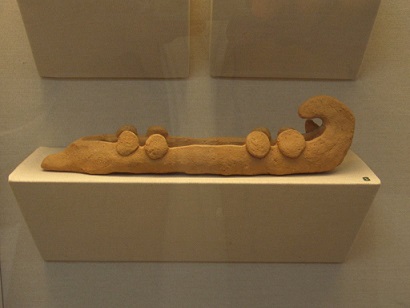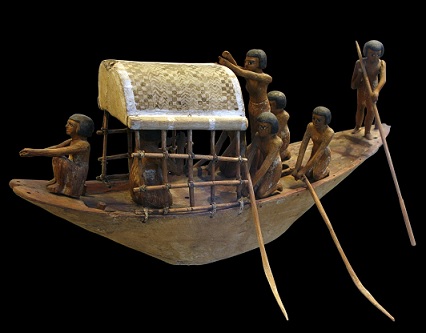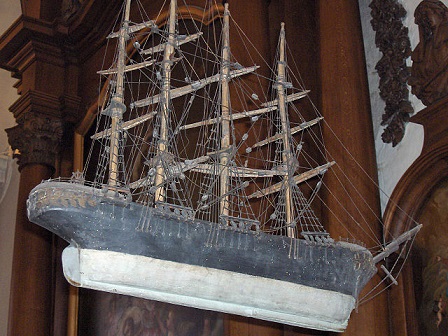
An ancient clay model of a Greek warship.
Ship modeling is most definitely not a “new” hobby by any means! In fact, its history goes much further back than most people actually realize. Ship and boat models have been discovered in the Mediterranean dating from ancient Egypt, Greece and Phoenicia. Models are a thing of beauty but also of tremendous historic value to also help archaeologists in estimating size of various sea vessels used in real life.
In times when life was comprised of simple items, ships were extremely technologically complex. They provided comfortable travel, added to the art of warfare and brought widespread trade to t,he world. Creating models was a way to express the importance of the ships and boats of the day.
Ancient models were made from a variety of materials, including wood, lead, bronze and clay, sometimes even ivory. The models were used in a variety of ways, with the most common being burial or votive offerings, household articles, art and toys. As household items, they were often used as lamps and drinking vessels.
One model, acquired by the Staatliches Museum in Kassel, Germany, has been tentatively dated by archaeologists to the 6th or 5th centuries BC. Another boat model, from a house deposit in Crete, dates to around 3000BC. This model is thought to be a child’s toy, a small fishing boat model.
Phoenician ship models, as well as others, have provided information on technical aspects of seafaring and on its cultural importance to society. Ancient Egyptian models are some of the most well-preserved discoveries. Some of the small ones that were found were made from wood, clay and even ivory. Most of these small ones are believed to have been toys and they are a rarity. Most Egyptian models were placed in tombs with the belief that the deceased would be able to use them in the next world.

Found in a tomb in Ancient Egypt and dates from about 2000 BC.
Several boat and ship models were found in the tomb of Tutankhamen and the tomb of Meketre (2061-2010 BC). In Meketre’s tomb, different types of model boats were found, including traveling boats, sporting boats and papyriform crafts. Some of the oldest surviving European ship models have been the early craft such as galleys, galleons, and even carracks dating from the 12th to the 15th centuries. Some have been found in churches where they were used for ceremonies or votive offerings for successful voyages.

An example of a very early church votive.
Prior to the early 18th century most all European small craft and even larger vessels were built without formal plans being drawn up. Models would be constructed by the shipwrights and used to show prospective customers. “Admiralty Models” were those constructed by the Royal Navy for the purpose of demonstrating proposed warship design. They were used to educate those civilians involved in financing or other aspects of the building the ships. These models were often made of either wood or bone. Rigging would be made from human hair, horsehair, silk or whatever other material available.
In the early part of the 20th century, amateur ship model kits became widely available. Most of these modern-day models were made of a combination of wooden hulls and cast lead for anchors, deadeyes and rigging blocks. Plastics gradually took over as time went on.
The magazine Popular Science was instrumental in a boom in the ship modeling industry with their publication of several modeling articles. Clubs for ship modelers have been formed throughout the world with their memberships comprised of persons of all ages and skill levels. Models of today are made of a variety of materials including wood, plastic, metal and paper. Construction techniques vary for each and models are not limited to size nor style. There are models of all sizes, ranging from extremely small to very large miniature models.
The staff at the St. Augustine Lighthouse & Museum as well as the LAMP personnel, have been instrumental in putting together a working example of actual ship model building. It is quite rare to see the modelers at work in a public setting. It is even more rare to have that setting allow for the visitors to converse with the modelers as well as get ujp close and personal with their view of the model itself.
As Summer, 2014 approaches plans are being made and supplies gathered for the children’s’ summer camps. In addition to the long list of activities, there will be ship modeling classes for those interested. The youth who attend will build their own wood ship model under the guidance of a Lighthouse modeler and an assistant. If you have children who are interested or know of kids who may, be sure to check with Brenda Swann at the Lighthouse for more information. She can be reached at the Lighthouse at (904)829-0745.

